Transitioning to barefoot shoes after hitting the milestone age of 50 might seem overwhelming at first glance. However, with a carefully crafted plan, this transition can greatly enhance your foot health and overall life satisfaction. Start your journey at a comfortable pace, permitting your muscles and joints ample time to adjust after years of traditional shoe use—think of it as training wheels for your feet. Commence with brief walking sessions and progressively increase your walking distance to prevent undue strain. It’s vital to prioritize proper walking mechanics, such as landing on your midfoot, to lower your injury risk. As you persist, you may notice enhancements in balance, arch strength, and overall posture. Always listen to your body’s cues and take a moment to appreciate the small victories along this transformative path.
Unleashing the Health Benefits of Barefoot Shoes for Your Feet
Embracing barefoot shoes is an exceptional way to reconnect with your body’s natural walking mechanics. These minimalist footwear options are designed to replicate the sensation of walking barefoot while still providing essential protection. This promotes better posture, fortifies foot muscles, and enhances overall balance. For those over the age of 50, this shift may initially feel challenging, but consider it a gradual introduction to a more instinctive walking style—take your time and focus on building strength.
Essentials of Barefoot Shoes: Key Information to Consider
While numerous brands and styles exist, all barefoot shoes share a few key traits: they feature a zero-drop design (indicating no elevation at the heel), thin soles that deliver vital ground feedback, and a wide toe box that accommodates natural toe splaying. Unlike conventional footwear, these shoes prioritize foot mobility over cushioning and arch support, encouraging a more natural walking experience.
Exploring the Advantages of Minimalist Footwear
Choosing minimalist footwear can strengthen your arch, alleviate joint stress, and improve proprioception, which refers to your body’s ability to sense its position and movement in space. Many individuals who transition to these shoes report a significant decrease in discomfort and a marked improvement in their walking mechanics over time.
If you're considering this shift, research indicates that adopting barefoot shoes can greatly lower your risk of injuries by promoting a midfoot strike instead of a heel strike. This walking technique also enhances blood circulation and maintains proper toe alignment, especially beneficial for those who have worn narrow shoes for extended periods.
Essential Features to Consider When Choosing Barefoot Shoes
When selecting quality barefoot shoes, keep in mind the following essential features:
- Flexible soles – These should bend and twist as your foot naturally would.
- Wide toe box – Ensures your toes have space to spread out naturally and prevents cramping.
- Zero-drop design – Guarantees a flat profile from heel to toe for optimal foot alignment.
- Lightweight materials – Prevents restriction of movement and enhances comfort.
These features are crucial to ensure that your feet can adjust comfortably to the new footwear.
The ideal pair of barefoot shoes should feel like a second skin, providing freedom instead of confinement. Steer clear of rigid soles or excessive arch support, as these can counteract the intended benefits. Look for breathable materials to avoid overheating, and pay attention to high-quality stitching if you intend to be active. Attending to these details can facilitate a smoother transition to barefoot shoes.
The Crucial Importance of a Gradual Transition to Barefoot Shoes
One of the most frequently overlooked aspects of transitioning to barefoot shoes is the necessity of giving yourself adequate time to adjust. Your feet and lower limbs may require several weeks or even months to acclimatize after years of relying on supportive footwear. Consider this transition as training wheels for your feet—begin slowly and progressively build strength. Rushing through this process can lead to discomfort or injuries, particularly after the age of 50, when your body’s resilience may not be as robust. Initiate with brief walking sessions, gradually extending the duration as your muscles and joints adapt. Exercising patience during this phase will yield long-term comfort and mobility benefits.
Avoiding the Risks of a Rapid Transition
The importance of sidestepping a hasty switch cannot be overstated. Jumping straight into barefoot shoes can place undue strain on your arches, calves, and Achilles tendons, potentially resulting in pain or even stress fractures. Your feet have developed decades of muscle memory influenced by cushioned soles, and abruptly changing this can lead to setbacks. Pay attention to your body—if you feel sharp discomfort, consider reducing your activity level. A slow and steady transition allows your tissues to adapt safely, significantly minimizing the risk of overuse injuries.
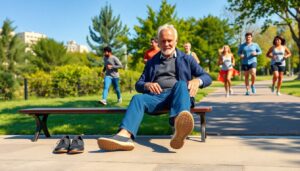
Recognizing Age-Related Changes in Foot Health
As we age, our feet naturally lose padding, flexibility, and muscle tone. Arches may flatten, and joints may become stiffer, which can make traditional shoes seem more comfortable—but often at the expense of foot health and proper mechanics. Barefoot shoes encourage natural movement, yet your feet will need time to relearn how to support themselves without artificial cushioning.
Ignoring these changes can exacerbate existing conditions like plantar fasciitis or arthritis. Barefoot shoes can assist in restoring strength, but only if introduced gradually. Focus on gentle exercises—like toe spreads and brief barefoot walks—to reactivate dormant muscles before committing to longer wear.
Physiological Changes to Expect During the Shift to Barefoot Shoes
On a biological level, your feet and legs will undergo significant transformations during your transition. Your arches will strengthen, toe splay will improve, and proprioception (awareness of ground contact) will enhance. An uptick in blood circulation occurs as your muscles engage more dynamically, helping to reduce the stiffness commonly associated with aging.
Over time, these adaptations lead to enhanced balance, diminished aches, and a more natural gait. However, rushing this process can result in setbacks—tendons and ligaments require time to lengthen and adjust. Complement your transition with foot-strengthening exercises, such as calf raises or marble pickups, to promote safe adaptation. The result? A more resilient and youthful foundation for your feet.
Assessing Your Readiness for Transitioning to Barefoot Shoes
Upon reaching the age of 50, your feet may need extra attention when making the switch to barefoot shoes. This preparatory phase is essential for gauging your readiness by examining foot health, consulting healthcare professionals, and reviewing your footwear history. Approach transitioning as training wheels for your feet—start slow and build strength.
Thoroughly Evaluating Your Foot Health
Your assessment should start with an evaluation of your foot strength, flexibility, and any existing conditions such as plantar fasciitis or bunions. Pay close attention to how your feet respond after walking barefoot in your home—any signs of discomfort or fatigue indicate a need for gradual adaptation.
Seeking Professional Guidance from Healthcare Experts
Before making a final decision, discuss your transition plans with a podiatrist or physiotherapist. They can identify potential risks, such as joint instability, and suggest appropriate exercises to facilitate a smooth transition.
In fact, healthcare professionals frequently highlight hidden issues such as reliance on arch support or muscle atrophy. Their insights will help ensure that you avoid injuries while effectively transitioning to barefoot shoes.
Reviewing Your Footwear History for Greater Insight
In preparation for the transition, take a closer look at your past footwear—stiff soles or high heels may have weakened your foot muscles. Hastening the shift from supportive shoes can place unnecessary strain on your tendons, so be mindful of patterns like frequent ankle rolls.
Moreover, dependence on arch support is common after years of wearing cushioned footwear. Recognizing this can help you tailor your transition pace, preventing setbacks like stress fractures or overuse pain.
Phase 1: Initial Transition Period (Weeks 1–4)
Many individuals over the age of 50 find the shift to barefoot shoes to be both exciting and challenging. Start by wearing them for just 1–2 hours each day to give your feet time to adjust without strain. Your muscles and joints need to acclimatize after years of cushioned support. Think of transitioning as training wheels for your feet—begin slowly and build strength. Avoid lengthy walks or high-intensity activities during this initial phase to minimize the risk of discomfort or injury.
Choosing the Right Barefoot Shoes for Your Needs
Beyond aesthetics, prioritize flexibility, zero-drop soles, and a wide toe box to encourage natural foot movement. Look for brands that specialize in barefoot shoes, as they provide the necessary support for your transition. Wearing ill-fitting shoes can hinder progress or lead to pain, so ensure you find a snug yet comfortable fit. Testing them indoors first is a wise strategy to confirm their comfort.

Engaging in Gentle Activities to Initiate Your Transition
Short walks, standing exercises, or gentle yoga provide excellent starting points. Focus on low-impact movements to activate dormant foot muscles without overwhelming them. Keep your initial sessions shorter than 30 minutes.
Considering that your feet have likely lost strength due to years of conventional footwear, overdoing it early may lead to strains or stress fractures. Gradually increase your activity levels only if you feel no lingering soreness. It’s crucial to listen to your body—while some discomfort is normal, pain is a clear indicator to slow down.
Enhancing Awareness of Foot Sensations During Your Transition
Before ramping up your activity intensity, take a moment to notice how your feet interact with the ground. Walking barefoot on safe surfaces like grass or carpet can help you reconnect with your natural movement patterns. This mindfulness is vital to prevent developing poor habits, such as heel striking.
Proper technique is more significant than speed. Landing softly on your midfoot reduces joint impact, while allowing your toes to spread enhances balance. If you experience sharp pain or numbness, stop immediately—these sensations may indicate potential injury. Celebrate small victories, such as improved posture or diminished stiffness.
Phase 2: Gradual Increase in Usage (Weeks 5–8)
All progress during your transition to barefoot shoes should be steady and intentional. By this point, your feet should begin to adjust, so aim to wear your barefoot shoes for 4–6 hours daily, incorporating short walks. Be cautious of overexerting yourself—always pay attention to your body and reduce activity if discomfort arises. This phase aims to build endurance while allowing your muscles and joints to adapt naturally. Think of this as training wheels for your feet; you’re gaining confidence, but patience is still essential.
Implementing Strengthening Exercises for Improved Foot Health
To alleviate stiffness or weakness, simple exercises like toe spreads, calf raises, and ankle circles can significantly boost foot strength. Incorporate these exercises into your daily routine to enhance flexibility and stability. Focus on executing slow, controlled movements to avoid strain. These exercises mimic natural barefoot movement and prepare your feet for extended wear.
Integrating Extra Walking Time into Your Daily Routine
As part of your daily activities, gradually add 10–15 minutes of walking in your barefoot shoes. Begin on softer surfaces, such as grass or carpet, to lessen the impact on your feet. Your primary goal is to build tolerance without pushing your limits.
Additionally, consider tracking your steps or distance to monitor your progress. Pain should always be treated as a warning sign—if you experience sharp discomfort, reduce your walking time. Remember that consistency is more important than intensity; small increases lead to lasting benefits.
Recognising Your Comfort Levels Throughout the Transition
Be vigilant about how your feet feel during and after wear. Mild soreness is typical, but persistent pain indicates that you may be overextending yourself. Be ready to adjust your routine as needed.
Consequently, prioritize proper fit and gradual adaptation. Barefoot shoes should provide a sense of liberation rather than constriction. If discomfort persists, consult a specialist to ensure your transition remains safe and effective.
Phase 3: Full-Day Wear Commitment (Weeks 9–12)
Continue wearing your barefoot shoes for longer durations, aiming for all-day use by week 12. By this point, your feet and lower legs should feel stronger, but always heed your body’s signals—if discomfort arises, scale back as needed. This phase solidifies your adaptation, so prioritize soft surfaces like grass or carpet initially to minimize strain. Excessive wear too soon can lead to injuries, making patience essential. Think of this transition as training wheels for your feet—steady progress ensures long-term success.
Transitioning to Daily Use of Barefoot Shoes with Confidence
Extended wear should feel natural by now; however, avoid high-impact activities until your muscles have fully adjusted. If needed, alternate between barefoot shoes and supportive footwear, especially after long days. Over time, your gait will refine, so concentrate on landing softly and distributing weight evenly. This gradual adjustment helps prevent overuse injuries while reinforcing proper movement patterns.
Incorporating Dynamic Exercises for Enhanced Mobility and Strength
With increased strength in your feet, introduce dynamic exercises such as toe spreads, calf raises, or balance drills to improve your mobility. These activities activate underused muscles and enhance proprioception, thereby reducing the risk of falls. Aim for 5–10 minutes of these exercises daily to maintain your progress.
Dynamic exercises not only build strength; they also retrain your nervous system for improved coordination. Neglecting these exercises can lead to prolonged adaptation, leaving you susceptible to stiffness or strain. Engaging in simple routines, like walking on uneven surfaces, mimics natural motion and boosts joint resilience, which is crucial for long-term comfort in barefoot shoes.
Continuous Assessment and Adjustment for Lasting Success
For ongoing success, regularly monitor for signs of overuse, such as persistent soreness or swelling. Immediately adjust your wear time or activity intensity if these symptoms arise. Remember, your transition isn’t linear—factors like terrain or fatigue require flexibility in your approach.
As a result, being attuned to your body helps prevent setbacks. Ignoring pain signals can lead to serious injury, while mindful adjustments foster steady improvement. Celebrate small victories, such as increased stamina or reduced discomfort, as indicators that your feet are adapting well.
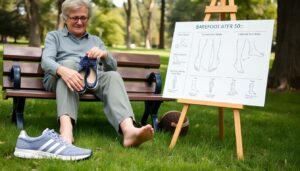
Confronting Common Challenges Faced During the Transition
Unlike conventional shoes, barefoot footwear requires your feet and legs to adapt to an entirely different movement style. You may encounter calf tightness, foot fatigue, or even feelings of hesitation as your body adjusts. These challenges are entirely normal and indicate that your muscles are becoming stronger. View this transition as training wheels for your feet—begin slowly, build strength, and remain attentive to your body to avoid the pitfalls of overuse injuries.
Managing Calf Tightness as You Transition
Approximately half of new barefoot shoe users report experiencing calf tightness, as your lower legs engage more without the elevation of a heel. Incorporate gentle stretching after walks, use a foam roller to massage your calves, and shorten your stride to relieve strain. This discomfort typically subsides within a few weeks as your muscles adjust to the new demands.
Addressing Foot Fatigue Throughout Your Transition
The sudden increase in engagement of foot muscles can leave your arches feeling fatigued. During the initial stages, limit wear time to 1-2 hours daily, alternating with supportive shoes. Walking on varied surfaces, like grass or sand, helps strengthen your feet gradually while minimizing fatigue.
With consistent wear, your foot endurance will improve. If fatigue persists beyond four weeks, consult a podiatrist—this may indicate underlying weakness or improper walking form. Ice and gentle massage can help alleviate temporary soreness.
Overcoming Hesitation or Fear during Your Transition
As you transition, you may have concerns about stability or joint impact. Start indoors or on smooth paths to build your confidence. Many individuals over 50 find that barefoot shoes actually enhance their balance once they adapt.
If lingering fears remain, consider trying hybrid minimalist shoes first. Studies indicate that transitioning to barefoot shoes reduces long-term fall risk by improving proprioception. Pairing barefoot shoes with toe exercises can accelerate safe adaptation.
Effective Strategies for a Successful Adaptation to Barefoot Shoes
Transitioning to barefoot footwear necessitates a gradual approach to avoid strain. Start with short walks, progressively increasing the duration as your feet become stronger. Think of this transition as training wheels for your feet—slow and steady progress minimizes the risk of injury while restoring natural mobility. Initially, alternate between barefoot shoes and supportive pairs to allow your muscles to adjust without overwhelming them.
Listening to Your Body for a Successful Transition
Despite the urge to push through discomfort, pay attention to signals like soreness or fatigue. While some discomfort is expected, sharp pain indicates that you may be progressing too quickly. Adjust your pace or revert to supportive shoes temporarily—your body’s feedback is your most reliable guide during this transition.
Setting Realistic Goals for Your Transition Journey
In the midst of excitement and impatience, focus on small, attainable targets, such as wearing barefoot shoes for 30 minutes daily. Gradually increase the time and intensity over several weeks. Rushing through the transition process can lead to setbacks, whereas consistency nurtures lasting strength.
It can be beneficial to track your progress in a journal or app. Document improvements in balance or reductions in stiffness—these indicators confirm that your feet are adapting positively. If your progress stalls, reassess without becoming frustrated; remember that adaptation varies from person to person.
Celebrating Small Milestones Throughout Your Transition
As you advance through this journey, take time to acknowledge achievements, such as completing your first barefoot walk around the block. Recognizing progress fuels motivation and reinforces positive habits, making the transition feel rewarding rather than overwhelming.
Setting goals like these keeps you engaged. Share your milestones with a community or loved ones—supportive accountability transforms challenges into victories. Every step forward, no matter how small, is a win for your long-term foot health.
Real-Life Success Stories of Transitioning to Barefoot Shoes
For inspiration, here are real-world accounts of individuals over 50 who successfully made the switch to barefoot shoes:
- Susan, 52: Reported an 80% reduction in chronic plantar fasciitis pain in just six months and now walks over 5,000 steps daily.
- Mark, 58: Noticed improved balance and eliminated knee stiffness after four months, successfully transitioning from rigid orthopedic shoes.
- Linda, 65: Regained natural arch strength within eight months, experiencing fewer falls and enhanced hiking endurance.
Real-Life Experiences of Older Adults Embracing Barefoot Shoes
Before making the switch, many individuals express concerns about potential discomfort or instability. Yet, stories like Robert’s, who at 60 transitioned from avoiding walks due to ankle pain to completing 3-mile hikes, demonstrate that gradual adaptation can be effective. Think of transitioning as training wheels for your feet—start slowly and build strength.
The Impact of Barefoot Shoes on Mobility and Pain Relief
A multitude of users report reductions in joint pain and enhancements in mobility. Individuals share experiences of less lower back pain and improved toe alignment, as barefoot shoes encourage more natural movement patterns.
Research indicates that minimalist footwear can enhance proprioception (body awareness), reducing fall risks in older adults. A 2022 study revealed that older individuals wearing barefoot shoes achieved 15% better balance scores after a 12-week period.
Lessons Learned from Transitioning to Barefoot Shoes
Any successful transition requires patience. Overextending yourself early can lead to discomfort, while ignoring foot fatigue can cause setbacks. Always heed your body—focus on progress over weeks, rather than days.
To sidestep pitfalls, prioritize short wear sessions (20-30 minutes initially) and incorporate foot-strengthening exercises. Those who rushed the process often faced temporary discomfort, while gradual adopters enjoyed long-term benefits more quickly.
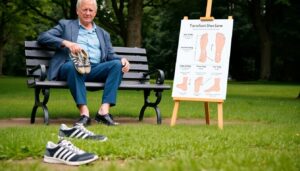
Expert Insights on Transitioning to Barefoot Shoes
The transition to barefoot shoes after the age of 50 is endorsed by specialists who emphasize the significance of gradual adaptation to prevent injury. Think of it as training wheels for your feet—begin slowly and build strength. Professionals agree that being attentive to your body is critical, and patience will allow you to enjoy the benefits of improved posture, balance, and foot health.
Podiatrist Recommendations for a Successful Transition
A common piece of advice from podiatrists is to strengthen your foot muscles before fully switching. They warn against rushing the transition, as overuse injuries can occur if you abandon supportive shoes too quickly. For some individuals, custom orthotics may still be necessary temporarily.
Physical Therapists' Perspectives on the Advantages of Barefoot Shoes
Physical therapists maintain that barefoot shoes can enhance gait mechanics and reduce joint strain over time. Many clients report diminished knee and hip pain, but they highlight the importance of maintaining proper alignment throughout the transition process.
Additionally, physical therapists recommend targeted exercises like toe spreads and calf stretches to ease the transition. They note that weak arches or past injuries may require extra attention, so consulting a professional can ensure a safer experience.
Footwear Experts' Recommendations for Selecting Barefoot Shoes
In addition to choosing minimalist designs, footwear experts suggest prioritizing flexibility and a wide toe box to allow for natural foot movement. They caution against opting for overly thin soles if you’re new to barefoot shoes, as thicker transitional models can assist your feet’s adjustment.
Even seasoned barefoot shoe wearers should initially alternate their minimalist shoes with traditional footwear. Footwear specialists caution that ignoring discomfort can lead to stress fractures, so progress at your own pace and emphasize quality over mere aesthetics.
Frequently Asked Questions About Barefoot Shoes and Their Transition
If you’re uncertain about how to start with barefoot shoes, you’re not alone. Many individuals over 50 have questions regarding the transition, benefits, and practicality of minimalist footwear. Below, we address the most common concerns to aid you in making informed decisions and easing into this new chapter in your foot health journey.
Is Transitioning to Barefoot Shoes Challenging Later in Life?
With the right mindset and patience, transitioning to barefoot shoes after the age of 50 is entirely feasible. Your feet may require time to adjust after decades of supportive footwear, but remember to approach it as training wheels for your feet—start slow, build strength, and be attentive to your body. Many older adults find the process rewarding as they rediscover their innate mobility.
How Can I Determine if Barefoot Shoes Are Right for Me?
Approximately half of new wearers report immediate improvements in posture or foot comfort. If you experience foot pain, stiffness, or balance issues, barefoot shoes may help promote proper alignment and strengthen your arches. Start with short walks to gauge your response to the shoes.
Given the unique needs of older feet, consult a podiatrist if you have severe arthritis, neuropathy, or previous injuries. Barefoot shoes are not universally suitable, but they often benefit those seeking a more natural walking experience.
Is it Acceptable to Occasionally Wear Traditional Shoes?
You can wear traditional shoes as needed, but be cautious of sudden switches that could strain your feet. Occasional use won’t reverse your progress, but relying on them too frequently may hinder your adaptation. When possible, opt for minimalist styles with wider toe boxes.
Additionally, avoid high heels or rigid soles during your transition phase, as they can counteract the benefits of barefoot shoes. Your feet thrive with consistency, so prioritize minimalist footwear in your daily routine to maximize positive results.
Key Considerations for Health Conditions When Transitioning
For individuals with underlying health conditions, transitioning to barefoot shoes requires additional caution. Consult your healthcare provider before beginning, particularly if you have arthritis, diabetes, or balance concerns. Your feet may require a slower, more tailored transition approach to prevent discomfort or injury. It is essential to listen to your body and adjust your transition plan as necessary—this journey is about achieving stronger, healthier feet, not a race.
Considerations for Arthritis and Foot Deformities
Even if you have arthritis or foot deformities like bunions, barefoot shoes can still be beneficial, but patience is crucial. Start with minimalist shoes that provide slight cushioning or offer wider toe boxes to alleviate pressure. Gradually increase your barefoot time as your joints adapt. If pain persists, decrease your usage and seek professional guidance—forcing adaptation can aggravate symptoms.
Adapting Transition Plans for Individuals with Diabetes
For individuals with diabetes, foot sensitivity and circulation issues necessitate caution. Inspect your feet daily for blisters or sores, as numbness may mask injuries. Choose soft, flexible barefoot shoes with seamless interiors to minimize friction. Transition more slowly than usual—even a few minutes daily—to avoid unnecessary stress.
Moreover, diabetes can impede healing, so preventing injuries is essential. Pair barefoot shoes with moisture-wicking socks to reduce the risk of infections. If you observe redness or swelling, pause your transition and consult your podiatrist promptly.
Addressing Balance and Coordination Issues During the Transition
The transition to barefoot shoes can challenge your balance, especially if you’re new to minimal support. Begin on stable surfaces like carpet or grass before advancing to uneven terrain. Strengthening your ankles and calves with simple exercises can enhance stability over time.
For balance concerns, consider using a cane or wall for support during your initial transition. Falls are a genuine risk, so prioritize safety—progress only when you feel confident. Over time, your proprioception will improve, enabling more natural movement.
Strategies for Long-Term Success with Barefoot Shoes
For enduring comfort and strength while wearing barefoot shoes, gradual adaptation is essential.
- Rotate between traditional and barefoot shoes to help your feet adjust to the change.
- Focus on proper walking form, landing gently on your midfoot.
- Enhance foot strength with toe spreads and calf stretches to ward off strain.
The more consistently you wear them, the better your feet will adapt to natural movement.
Maintaining Foot Health Throughout Your Transition
Before committing to barefoot shoes, evaluate your feet for calluses, blisters, or discomfort. Regularly massage your feet and soak them in warm water to relieve tension. Listen to your body—if pain persists, reduce wear time or consult a specialist. The goal is to build resilience without overloading your feet.
Incorporating Foot Mobility Workouts into Your Routine
Simply wearing barefoot shoes won’t transform your foot strength—pair them with mobility exercises. Consider toe yoga, ankle circles, or picking up marbles to enhance flexibility. These simple habits reinforce your transition and prevent stiffness.
Research indicates that foot mobility work improves balance and reduces injury risks, particularly for those over 50. Dedicate 5-10 minutes daily to these activities, and you’ll notice smoother strides in your barefoot shoes.
Staying Informed About Footwear Developments and Innovations
Making informed choices ensures you benefit from the latest advancements in barefoot shoe technology. Follow reputable brands, read reviews, and engage with communities to share experiences. Avoid outdated designs that lack adequate toe space or sole flexibility.
As the market evolves, some brands now offer transitional models with slight cushioning—ideal if you require additional support. However, be cautious of imitations labeled “minimalist” that still provide restrictive features. Always prioritize your foot’s natural movement.
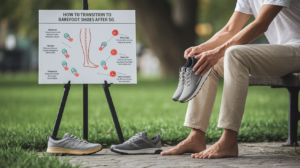
Concluding Thoughts on Transitioning to Barefoot Shoes
Transitioning to barefoot shoes after the age of 50 is like utilizing training wheels for your feet—begin gradually and build strength. Start with short walks, progressively increasing the duration as your muscles adjust. Complement this with foot exercises designed to enhance flexibility and balance. Always heed your body’s signals, allowing it to adapt at its own pace. Over time, you will notice improvements in your posture, stronger feet, and a more natural walking style. Your venture into the world of minimalist footwear is about nurturing patience and consistency, not haste. With the right approach, you can enjoy the numerous benefits of barefoot shoes while minimizing discomfort. Keep progressing steadily, one step at a time.
Frequently Asked Questions
Is it safe to transition to barefoot shoes after 50, especially if I have joint concerns?
Absolutely! Many individuals over 50 successfully transition to barefoot shoes with patience and care. Consider it akin to training wheels for your feet—start slowly, build strength. Barefoot shoes encourage natural movement, which can enhance joint mobility over time. If you have specific conditions like arthritis, consult a podiatrist beforehand, but gradual adaptation often aids in strengthening your feet and ankles.
How long does it take to adjust to barefoot shoes, and what’s the best way to begin?
The adaptation period varies, but most individuals need approximately 3–6 months to achieve full comfort. Start by wearing barefoot shoes for short intervals (30–60 minutes daily), such as during walks or at home. Pair this with exercises to strengthen your feet (toe spreads, calf raises) to expedite the process. Your feet have spent decades in supportive shoes, so treat this as a gentle reawakening of their natural functions.
Will barefoot shoes help improve balance and posture as I age?
Yes! Barefoot shoes enhance proprioception (your awareness of movement), which supports improved balance and posture. The thin soles allow your feet to “sense” the ground, boosting stability—akin to upgrading from an unstable chair to a solid foundation. Numerous older adults report fewer trips and better alignment after transitioning, but consistency is key for reaping long-lasting benefits.
The Article How to Transition to Barefoot Shoes After 50: A Complete Guide appeared first on My Shoes Finder
The Article Barefoot Shoes After 50: Your Complete Transition Guide Was Found On https://limitsofstrategy.com
The Article Barefoot Shoes: A Complete Guide for Those Over 50 First Appeared ON
: https://ad4sc.com
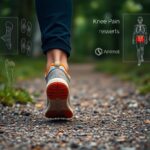
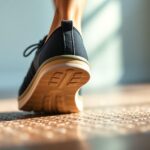
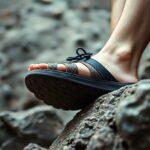


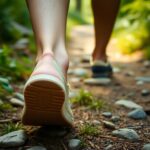


This transition to barefoot shoes resonates with me, especially as I recently turned 50 myself. I’ve spent years in conventional shoes, and the idea of embracing something more natural is both exciting and daunting. I’ve started incorporating short walks in my minimalist shoes, and I can already feel a difference in my balance and awareness of how I move. It’s fascinating how something as simple as footwear can reconnect us with our bodies.